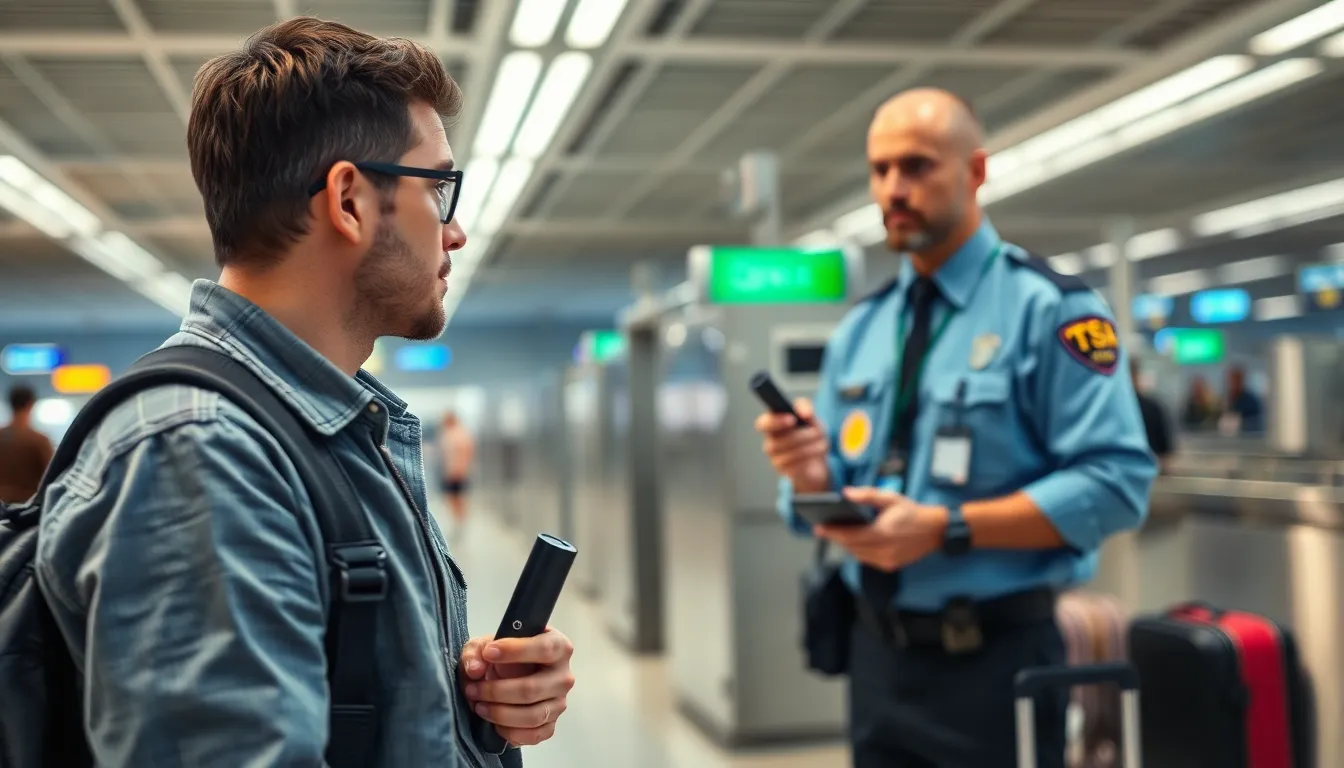Traveling with a vape can raise a few eyebrows and questions, especially when it comes to air travel. As vaping continues to grow in popularity, many passengers wonder about the rules and regulations surrounding e-cigarettes and vape devices during flights. It’s essential to understand the dos and don’ts to avoid any last-minute surprises at the airport.
Airlines and regulatory bodies have implemented specific guidelines regarding vaping. While some airlines may allow vapes in carry-on luggage, others might have stricter policies. Knowing the ins and outs of these regulations can help travelers enjoy their journey without unnecessary stress. This article explores the key points about taking a vape on an airplane, ensuring a smooth and informed travel experience.
Table of Contents
ToggleOverview of Vaping Regulations
Traveling with a vape requires awareness of specific rules that vary by airline and regulatory body. Understanding these regulations ensures compliance and a smoother travel experience.
Airline Policies
Airlines enforce unique policies regarding vaping devices. Most airlines prohibit vaping during flights, treating it similarly to traditional smoking. Passengers often must carry their vapes in carry-on luggage, as checked baggage restrictions commonly apply. Specific airlines, such as Delta and American Airlines, explicitly forbid the use of e-cigarettes during the flight. Additional restrictions may include limits on the quantity and size of e-liquid containers carried on board.
TSA Guidelines
The Transportation Security Administration (TSA) outlines clear guidelines for traveling with vape devices. Passengers can bring vapes and e-liquids through security but must ensure they comply with liquid restrictions, limiting containers to 3.4 ounces (100 milliliters) or smaller. All liquids must fit within a quart-sized clear plastic bag. TSA recommends keeping vaping devices easily accessible during security checks. Any vape device with a lithium battery must remain in carry-on luggage due to fire safety regulations.
Safety Concerns

Travelers should understand the potential safety risks associated with bringing vapes on airplanes. These concerns primarily revolve around fire hazards and battery safety.
Fire Hazards
E-cigarettes and vape devices pose fire hazards. Lithium-ion batteries used in these devices can overheat, leading to combustion if they experience damage or malfunction. Airlines require that all vapes be stored in carry-on luggage, ensuring immediate access in case of an emergency. Passengers must avoid leaving vapes unattended, as they could ignite when overheated. Additionally, strict adherence to airline and TSA regulations regarding device handling can mitigate risks during travel.
Battery Safety
Battery safety remains a crucial consideration for vape users when flying. Lithium-ion batteries should be in good condition; damaged or swollen batteries must not be brought onto aircraft. Each passenger can typically carry spare batteries, but they must remain protected to prevent short-circuiting. It’s recommended that users store batteries in their original packaging or a dedicated battery case. By following battery safety guidelines, travelers can significantly reduce the likelihood of incidents related to battery failure or overheating during flights.
Traveling with Vape Equipment
Traveling with vape equipment requires attention to regulations and proper handling. Knowing the guidelines ensures compliance and enhances the traveling experience.
Carry-On vs. Checked Luggage
Most airlines require vape devices and e-liquids to be carried in carry-on luggage. Checked luggage prohibits vapes due to fire safety regulations concerning lithium batteries. Passengers should keep vaping devices accessible, typically in an overhead bin or under the seat. Each airline might impose specific restrictions on e-liquid container sizes, often mirroring TSA’s 3-1-1 liquid rule. These policies help prevent incidents during flights and ensure quick access in case of emergencies.
Packaging Tips
Proper packaging of vape equipment and supplies facilitates compliance and safety. Travelers should place vape devices and spare batteries in protective cases to prevent damage. E-liquids should be tightly sealed to avoid leaks, with each container not exceeding 3.4 ounces for TSA compliance. It’s advisable to store liquids in a resealable plastic bag for clarity and easy inspection. Additionally, label batteries and other components clearly to expedite security checks and confirm their safe transport.
International Travel Considerations
Travelers must consider specific regulations and laws when taking vape devices on international flights. Understanding varying country-specific laws and customs regulations ensures compliance and a smoother travel experience.
Country-Specific Laws
Countries maintain unique laws regarding vaping and e-cigarettes. Some nations, such as Australia and New Zealand, place strict bans on importing vape products, while others, like the UK and Canada, have more lenient regulations.
- Countries with strict restrictions: Thailand, Singapore, and Brazil have harsh penalties for possession and usage.
- Countries with defined regulations: In Canada, regulations allow vaping, but age restrictions apply. The UK enforces rules on advertising and packaging.
Travelers should research laws of their destination before departure to avoid legal issues.
Customs Regulations
Customs regulations dictate what travelers may bring into a country. Many countries limit the quantity of e-liquids and vape devices.
- Quantity limits: Countries may enforce allowances, commonly around 1-2 vape devices and a set volume of e-liquids, often up to 1 liter.
- Declaration: Some countries require electronic smoking devices to be declared at customs.
Travelers must ensure compliance to avoid fines or confiscation. Checking with the destination’s customs authority prior to travel is essential for smooth entry.
Traveling with a vape requires careful consideration of airline policies and regulations. Understanding where and how to store vape devices and e-liquids is crucial for a smooth journey. Passengers should always keep their vapes in carry-on luggage and be aware of the specific rules regarding e-liquid quantities.
Additionally it’s important to stay informed about the vaping laws of the destination country to avoid potential legal issues. By following these guidelines and ensuring battery safety travelers can enjoy their journeys without unnecessary stress related to their vaping habits.


